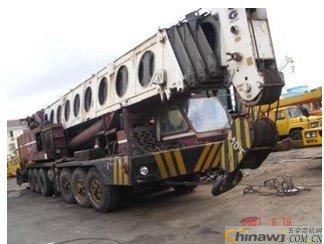In the ever-evolving logistics industry, the sight of cranes operating on the shore has become a common scene. These cranes are subject to increasingly demanding conditions, especially when it comes to performance and safety. Today, we understand that cranes play a vital role in cargo handling—whether it's lifting, moving, or unloading goods. But what makes the design of these cranes different, particularly when it comes to their braking systems? Let’s take a closer look at the advantages of disc brakes over traditional wheel brakes in offshore crane applications.
Disc brakes offer several key benefits compared to drum brakes, making them a preferred choice for modern offshore cranes:
1. **Superior Heat Dissipation** – Disc brakes have a much larger surface area for heat dissipation than drum brakes. While drum brakes typically have a wrap angle of around 70° to 360°, disc brakes only make contact at a small point, reducing the amount of heat generated during braking. This allows for faster cooling and extends the lifespan of brake components. Ventilated discs further enhance this advantage by increasing the heat dissipation area.
2. **Compact Design with High Torque Capacity** – Unlike traditional drum brakes, disc brakes can be installed in smaller spaces without compromising braking power. By using multiple disc brakes, engineers can achieve high torque output while maintaining a compact footprint, which is essential in space-constrained environments like shipyards.
3. **Minimal Thermal Expansion** – The brake disc experiences very little thermal expansion during operation, which reduces the risk of brake fade and ensures consistent performance. This also helps in shortening the response time of the braking system.
4. **Easy Installation and Maintenance** – Disc brakes are generally easier to install and maintain due to their simpler design. They require less space and are often more accessible for inspection and servicing.
5. **Low Inertia and Faster Response** – The lower rotational inertia of disc brakes allows for quicker start-up and stopping, which is crucial in high-speed operations. For example, the YPZ2 series of arm disc brakes from Jiaozuo Brake Co., Ltd. feature automatic compensation mechanisms such as a back-off device, ensuring that brake shoes remain properly aligned without manual adjustment after each rotation. This makes them ideal for heavy-duty mechanical applications.

Electric Control Valve,Pneumatic Sleeve Valve,Sleeve Control Valve,Electric Sleeve Control Valve
CEPAI Group Co., Ltd. , https://www.jscepai.com